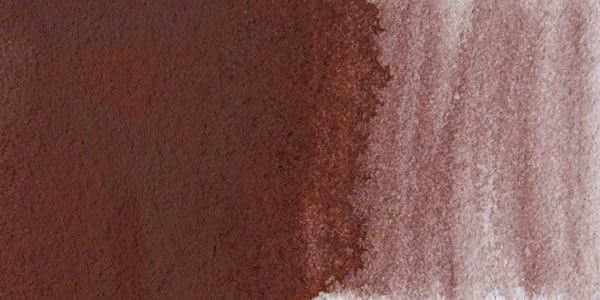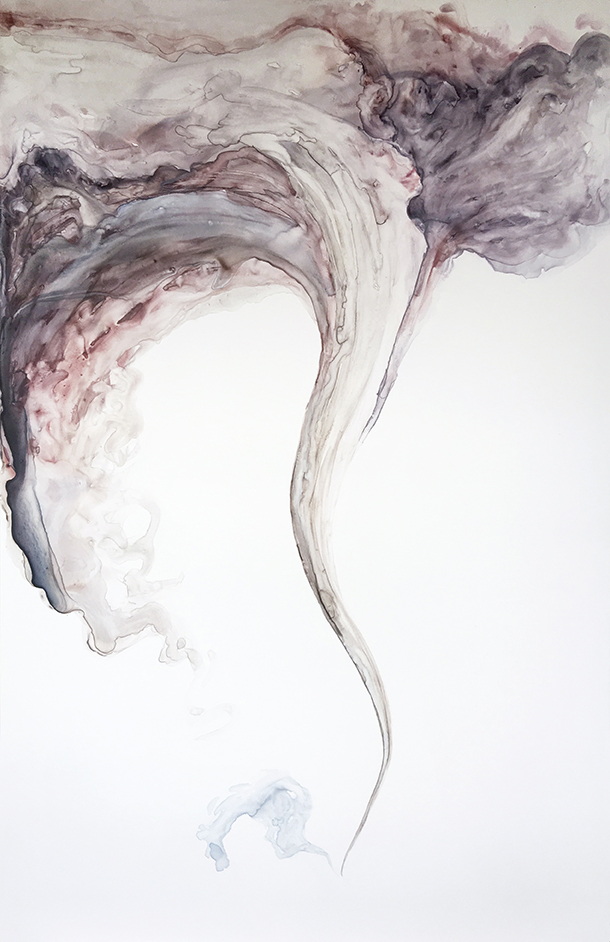
Caput Mortuum – Winsor & Newton
April 18, 2017
Caput mortuum (plural capita mortua) is a Latin term whose literal meaning is “dead head” or “worthless remains”, used in alchemy and also as the name of a pigment.
In alchemy, caput mortuum signified a useless substance left over from a chemical operation such as sublimation and the epitome of decline and decay; alchemists represented this residue with a stylized human skull, a literal death’s head. Caput mortuum (variously spelled caput mortum or caput mortem),
also known as cardinal purple, is the name given to a purple variety of haematite iron oxide pigment, used in oil paints and paper dyes. It was a very popular color for painting the robes of religious figures and important personages (e.g. art patrons). The name for this pigment may have come from the alchemical usage, since iron oxide (rust) is the useless residue of oxidization. It was originally a byproduct of sulfuric acid manufacture during the 17th and 18th centuries, and was possibly an early form of the copperas process used for the manufacture of Venetian red and copperas red.
Caput mortuum is also sometimes used as an alternative name for mummy brown (alternatively Egyptian brown), a pigment that was originally made in the 16th and 17th centuries from ground-up mummies, and whose use was discontinued in the 19th century when artists became aware of its ingredients. -Wikipedia
My childhood was marked by an obsession with mummies. I lived in England until the age of seven, and one of my absolute favorite things to do was to visit the mummies in all of the various museums, especially the Ashmoleum. To think that paint was made up from ground-up mummies is macabre and disturbing especially given the ancient Egyptian’s belief that they would inhabit their bodies again. It’s interesting that once artists found out what was actually in their paint they sought an alternative, just as we do now. Did they struggle to give up this color? Is the synthetic as satisfying to the eye or on the brush?

Head Squall, Watercolor on Yupo, 26 x 20 inches, 2017 (I used Caput mortuum through much of the bloom of the cloud)
The Caput mortuum pigment certainly does look as though it was made from something moldering. It is a strange color, which has captured my imagination. It’s muddy, earthy, and thicker than many other watercolors because of its tendency to be opaque. But when you water it down, it becomes more transparent, it begins to glow hovering somewhere between violet, red, and brown. It is a rich color that enfolds you, like a cardinal’s robe.
Strangely, it is a color that I would have considered ugly at one point, and still in moments I question if it is indeed ugly. Ugly seems a totally inadequate way to discuss how colors feel. I feel most comfortable around cooler colors, blues and greens. I love jewel tones and an intense red can captivate me like nothing else, especially that of a poppy. Muddy tones like Caput mortuum… well they are something entirely different. There is something uncomfortable and dangerous about this color, it taps into something that I feel entirely unable to name. The name alone inspires curiosity to know more. I’ve been using it in a number of compositions as of late (see above), it has a murkiness, it is undecided, it enshrouds, it is dark…
And then there is the alchemy aspect. Alchemy has always captured my imagination. A mysterious cross between magic and science, the alchemist seeking out the rare, and the unknown, laboring to create something from disparate elements. The romance of such a futile goal of creating the philosopher’s stone, appeals to me. I enjoy thinking about elixirs of life, immortality, the unattainable. Perhaps the search for the philosopher’s stone was worthwhile, and in the end, it was only the journey that mattered, not the destination. I can imagine that if I were left with nothing but caput mortem on my crucible, it might have spurred me on to delve deeper into the mysteries.